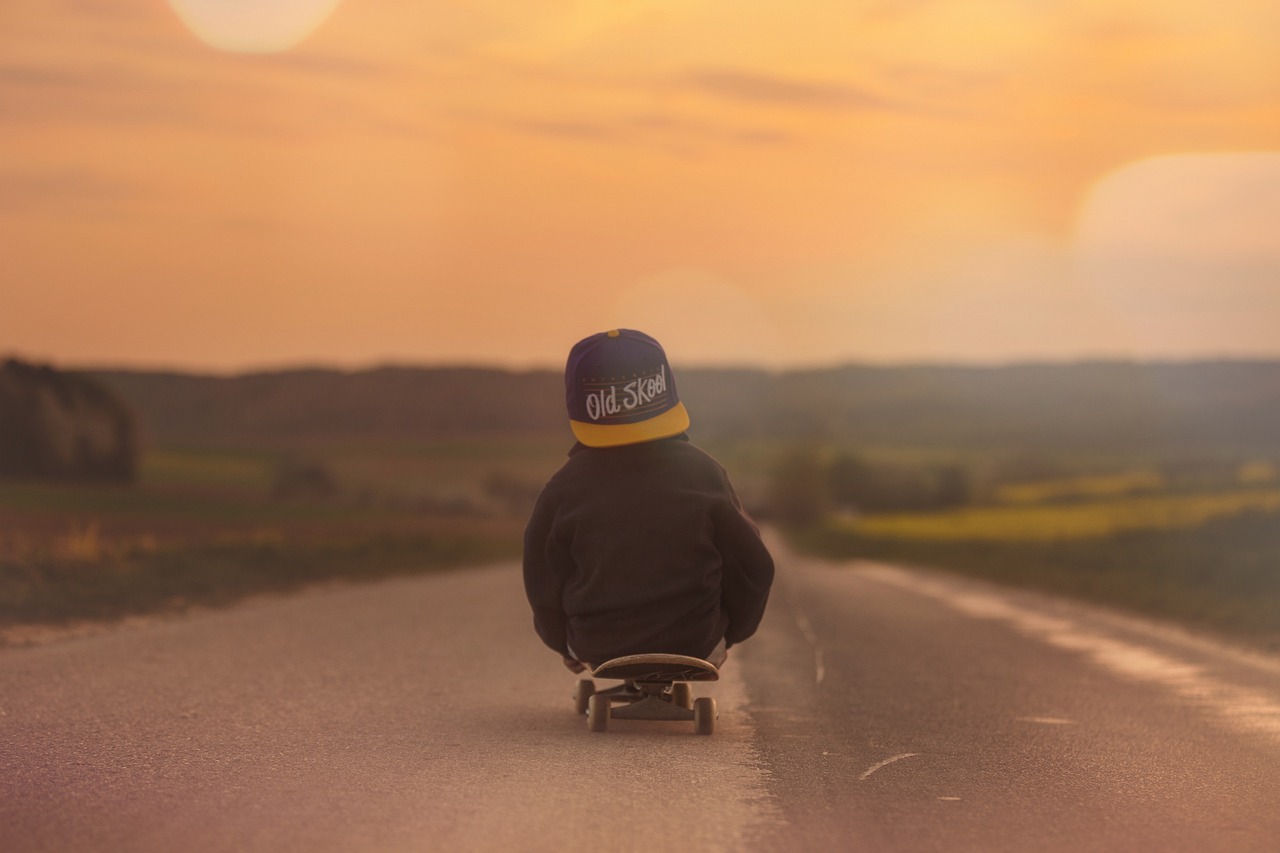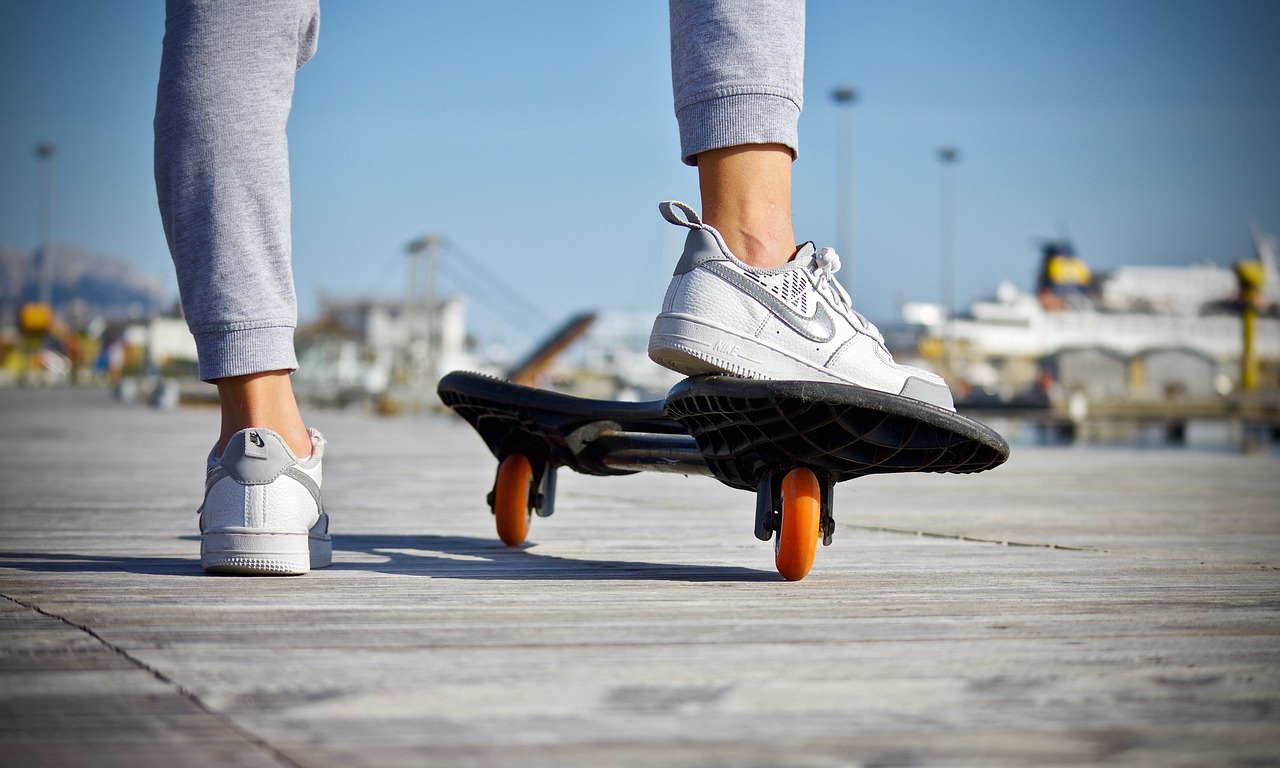Rediscovering the Thrill: How Skateboarding Captured Hearts in the 1960s

In the vibrant decade of the 1960s, a new cultural phenomenon began to take shape on the sun-soaked streets of California. Skateboarding emerged not just as a sport, but as a symbol of freedom, creativity, and youthful rebellion. This interactive exploration invites you to relive the excitement and rediscover the thrill that captivated a generation.
The Birth of Skateboarding
Skateboarding’s origins can be traced back to surfers who wanted to recreate the sensation of riding waves on land. They used wooden planks and roller skate wheels to create an entirely new form of transportation and expression. Imagine the joy of gliding down the pavement, the wind in your hair, and the adrenaline pulsing through your veins!
Key Events that Shaped the Sport
Throughout the 1960s, several pivotal events helped skateboarding gain popularity:
- The First Skateboard Competitions: In 1965, the first official skateboard competition was held in Hermosa Beach, California, drawing crowds and media attention.
- Innovative Designs: The introduction of the kicktail in the late 1960s allowed skaters to perform tricks and maneuvers previously thought impossible.
- Influence of Music and Culture: The rise of surf rock and other music genres intertwined with skateboarding, enhancing its appeal to the youth.
The Skateboarding Community
Skateboarding fostered a tight-knit community where friendships flourished. Skaters often gathered in local parks or empty pools, sharing tips and tricks. Picture the camaraderie as young individuals cheered each other on, finding joy in both success and failure.
The Iconic Skateboard
Skateboards evolved significantly during this era. Here’s a quick look at the changes:
| Year | Board Design | Materials Used |
|---|---|---|
| 1960 | Wooden planks | Wood |
| 1965 | Kicktail introduced | Wood with metal wheels |
| 1969 | Plastic boards | Plastic with improved wheel technology |
Challenges and Triumphs
As skateboarding grew in popularity, it faced challenges, including safety concerns and public perception. However, skaters persevered, pushing the boundaries of what was possible. The thrill of landing a new trick or cruising down a steep hill outweighed the risks!
Legacy of the 1960s Skateboarding Scene
Fast forward to today, and the spirit of 1960s skateboarding lives on. The bold moves, the iconic styles, and the sense of community continue to inspire new generations. Whether you were part of this revolution or are discovering it for the first time, the essence of skateboarding remains the same: a celebration of freedom and expression.
Interactive Reflection
Now it’s your turn! Think back to your experiences or the stories you’ve heard about skateboarding in the 60s. What memories stand out? How did skateboarding influence your view of youth culture? Feel free to share your thoughts!
From Streets to Stars: The Iconic Skaters Who Changed the Game

Introduction to Skateboarding Icons
In the 1960s, skateboarding emerged as a rebellious sport, transforming the streets into arenas of creativity and expression. Skaters who once rode the waves of California made their mark on sidewalks, becoming cultural icons.
The Pioneers of the Sport
Meet Tony Alva, a name synonymous with skateboarding innovation. Alva was not just a skater; he was a trendsetter. He revolutionized vertical skating, pushing boundaries and inspiring many to follow his path. Imagine a young boy watching him defy gravity on a ramp, igniting the dream of skating in the hearts of countless others.
Transitioning to Stardom
Another notable figure is Jay Adams. Known for his carefree style, Adams was a face of the Z-Boys, a group that epitomized the essence of skateboarding. His passion and skill made him a celebrity, capturing the imagination of many. Can you picture the thrill of watching him perform tricks that seemed impossible at the time?
The Cultural Impact
With skaters like Stacy Peralta, who not only skated but also documented the culture through film, the sport gained visibility. Peralta’s films, such as “The Dogtown and Z-Boys,” introduced a wider audience to the vibrant world of skateboarding. Have you ever felt the excitement of discovering a sport that combines art, athleticism, and community?
Legacy of the Icons
These skaters didn’t just ride boards; they shaped a movement. Today, when you see skateboards on the streets or in parks, remember the pioneers who took risks and changed the game forever. They transformed skateboarding from a pastime into a lifestyle.
Conclusion: A Call to Remember
As we look back at the 1960s skateboarding revolution, let’s celebrate those who paved the way. Reflect on the joy and freedom skateboarding brings, and perhaps consider how these icons inspired not just a sport, but a cultural shift that resonates even today.
Wheels of Change: Exploring the Cultural Impact of Skateboarding

In the 1960s, a new movement began to take shape on the streets and sidewalks of America. Skateboarding emerged not just as a pastime but as a cultural phenomenon that would change the landscape of youth culture forever. This exploration will take you through the integral role skateboarding played in societal shifts during this vibrant decade.
Skateboarding originated in California, where surfers sought a way to ride the waves when the ocean was calm. These early skateboarders or ‘sidewalk surfers’ used homemade boards with roller skate wheels, creating a new form of recreation that intertwined with the surfing culture. How many of you remember the first time you saw a skateboard? It was like witnessing a new form of freedom.
Skateboarding and Youth Identity
As skateboarding gained popularity, it became a symbol of rebellion and individuality. Many youths of the 60s embraced skateboarding as a way to express themselves, breaking free from societal norms. The freedom of gliding down a hill, feeling the rush of wind, and performing tricks brought a sense of identity. Can you imagine the thrill of mastering your first ollie?
The Influence of Music and Media
The rise of skateboarding was also closely tied to the music of the time. Surf rock and later punk music provided the perfect soundtrack for skateboarding culture. Movies and magazines began to feature skateboarding, showcasing its daring tricks and lifestyle. Do you recall any memorable songs or films that inspired you or the youth around you during that time?
Skateboarding and Fashion
Skateboarding didn’t just influence how people rode; it also impacted fashion. The colorful graphic tees, baggy pants, and unique shoes became synonymous with the skate culture. Skateboarders showcased their style and attitude, making it a distinctive part of the cultural fabric. Did you ever find yourself adopting any of these styles during the 60s?
Community and Competition
The 1960s also saw the formation of skateboarding communities. Local skate parks emerged, where skateboarders could gather to practice and compete. Events like the first national skateboarding competition in 1965 brought enthusiasts together, fostering a sense of camaraderie. How did the sense of community around skateboarding resonate with you or your peers?
Legacy and Transformation
The impact of skateboarding in the 1960s laid the groundwork for future generations. It transformed from a niche hobby to a global phenomenon, influencing various aspects of culture, from sports to art. Today, skateboarding continues to evolve, maintaining the spirit of creativity and rebellion. What are your thoughts on how this sport has evolved over time?
Reflecting on the cultural impact of skateboarding during the 1960s reveals a rich tapestry of change. It was more than just a trend; it was a movement that shaped identities, communities, and cultural expressions. Skateboarding taught us about the importance of freedom and expression. What lasting memories do you hold from this vibrant era?
Unleashing Creativity: The Art and Style of 1960s Skateboarding
The Emergence of Skateboarding as an Art Form
In the 1960s, skateboarding evolved from a simple pastime into a vibrant expression of creativity and style. As skaters took to the streets and parks, they began to showcase their individuality through their skateboards, tricks, and fashion choices.
The Skateboard: A Canvas for Expression
Skateboards themselves became a canvas for personal expression. Many skaters customized their boards with unique graphics and colors. Have you ever seen a skateboard decorated with colorful stickers or intricate designs? These artistic choices reflected the skater’s personality and style.
Tricks: Elevating Skateboarding to an Art Form
As skaters began to master tricks, they were not just performing; they were creating a form of art. From the simple ollie to complex aerial maneuvers, each trick was a way to express creativity and skill. Can you imagine the thrill of landing a new trick on your skateboard?
Fashion: The Style of the Skaters
Skateboarding in the 1960s was not just about the board; it was also about the style. Skaters wore loose-fitting clothes that allowed for freedom of movement. Baggy jeans, colorful t-shirts, and checkered slip-on shoes became staples of the skater’s wardrobe. Do you recall a particular style from your youth that resonated with you?
The Influence of Music and Culture
Music greatly influenced the skateboarding scene. The sounds of rock and roll, surf music, and later punk rock created an atmosphere that inspired skaters to push their limits. Did you have a favorite band or song that motivated you during your adventures?
Community and Collaboration
Skateboarding fostered a strong sense of community. Skaters would gather, share tips, and celebrate each other’s accomplishments. Have you ever participated in a group activity that brought people together, like a skate session? This collaboration led to the development of new tricks and styles, further enhancing the culture of skateboarding.
The Legacy of 1960s Skateboarding
The creativity unleashed during the 1960s laid the groundwork for future generations of skaters. Today’s skateboarding culture still reflects the artistic spirit and individualism that began in this revolutionary decade. What aspects of 1960s skateboarding do you think still resonate in today’s culture?
A Community on Wheels: The Bonding Power of Skateboarding in the 60s
The Emergence of a New Culture
The 1960s marked a transformative era in American society, not just politically and socially, but also culturally. One of the most vibrant expressions of this cultural shift was the rise of skateboarding. This wasn’t just a pastime; it became a community that brought together youth from various backgrounds. Can you recall a time when a simple activity united people?
Skateboarding: More than Just a Sport
Initially, skateboarding began as a fun activity, a way for surfers to enjoy their passion on land when the waves were flat. However, it quickly evolved into something much deeper. It fostered connections among young people, creating neighborhoods filled with laughter and camaraderie. Have you ever seen a group of kids sharing their boards? This sharing of equipment was symbolic of their blossoming friendships.
The Social Landscape of Skateboarding
As skateboarding grew, so did its community. Parks and streets transformed into vibrant meeting spots where skaters gathered. They exchanged tricks and tips, cheered each other on, and shared stories. What do you think it meant for those kids to have a place to belong? This unspoken bond helped many find their identity in a rapidly changing world.
Building Lifelong Friendships
Many lifelong friendships were forged on skateboards. Can you remember your own youthful friendships? Whether it was competing in local skate contests or simply cruising around town, these shared experiences laid the foundation for strong relationships. The thrill of learning a new trick or simply hanging out after school became treasured memories.
Inclusivity and Diversity
Skateboarding was unique in its inclusivity. Kids from various social strata, races, and backgrounds found common ground on their boards. Isn’t it fascinating how a simple board can break down barriers? This sense of belonging was particularly important during the tumultuous 60s, as communities sought connection amidst societal upheaval.
Skateboarding’s Lasting Legacy
As we reflect on the impact of skateboarding in the 60s, it’s clear that it was more than just a trend. It was a movement that built a community around shared passions. What do you think is the legacy of that era for today’s youth? The spirit of camaraderie continues to thrive as skateboarding remains a popular activity, reminding us of the bonds formed on those wheels.
Join the Conversation
As we look back, it’s essential to celebrate the stories of those who rode the waves of change. Do you have a skateboarding story to share? We invite you to reminisce about the friendships and experiences that shaped your youth during this remarkable time. Share your memories and let’s keep the spirit of community alive!
